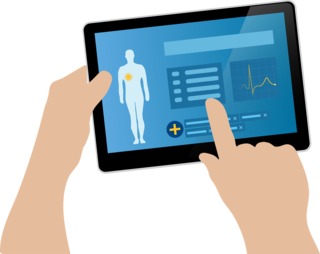Telemedicine Is Ready…Almost
It’s time to translate the UX to the tech-based CLX (clinical experience).

Remember those days when the internet was new, and everyone scrambled to get their site up and running? The strategy was to take your existing brochure or visual aid and just post it to the net. Grab the core visual, type in the headlines, and there you have it! Or at least you thought you did… until the idea of the user experience (UX) transformed the internet (and your website) into an engaging and interactive place that people wanted to explore and learn more. The rest is history.
Today, we’re seeing something similar with telemedicine as COVID-19 drives its use, or should I say forces its use, in difficult times where adoption is more about less about choice and more about overt necessity. But will telemedicine evolve to a dynamic and preferred experience? Have we “cut and pasted” the traditional office experience into a computer screen and left it at that? The talking head clinician is hardly a robust application of technology’s capabilities to telemedicine.
It’s time that UX moves over and allows the introduction of the technology-based clinical experience (CLX). Today’s CLX allows less of a conversation and more of a dialogue that optimizes the engagement—from a social, clinical, and economical perspective.
Providing that old-fashioned house call on a computer is quaint, perhaps even desired by some. But today’s and tomorrow’s telemedicine visit may become more about the technology itself and less about Dr. Marcus Welby chatting on a screen. The future of telemedicine must leverage the tools of user engagement that are already in our consumer toolboxes. Our challenge isn’t just to repurpose a clinical history and physical exam but to reinvent the exchange of information in the techno-human construct. Even our natural conversations can be optimized with technology and artificial intelligence to offer something that is not just “human-like” but actually “uber-human” and establishes a new potential that makes a simple video chat with a doctor feel a bit yesterday. And while many will still cling to the humanity of a traditional engagement, the potential for the unique pairing of a bot with specific needs—from language to gender neutrality—can enhance and even optimize the engagement.
The incorporation of technology into the telemedicine visit is another essential element to making it mainstream. Today, digital health tools can add important layers to the telemedicine visit. What was once the domain of the physician and specialist is a spectrum of highly accurate and low-cost consumer tools. Build into the dialogue the role of artificial intelligence, language analytics, and the emerging aspect of voice, breath, and speech patterns, and what emerges is tomorrow’s telemedicine that expands the role of a simple conversation to a diagnostic tool in of itself. From the ECG to the stethoscope to voice-mediated disease detection, technology no longer facilitates a connection but enhances the very nature of the techno-exam.
It’s clear that the health technology toothpaste is out of the tube. And it’s unlikely that it’s going back in. The “option” of health technology is shifting to an “imperative” in the era of COVID-19. But the question remains if patients and practitioners alike will translate these innovations into new and robust, long-term modalities or just force-fit them into a recalcitrant healthcare system that struggles with innovation and change. Only time and money will tell. And we’re running out of both.
